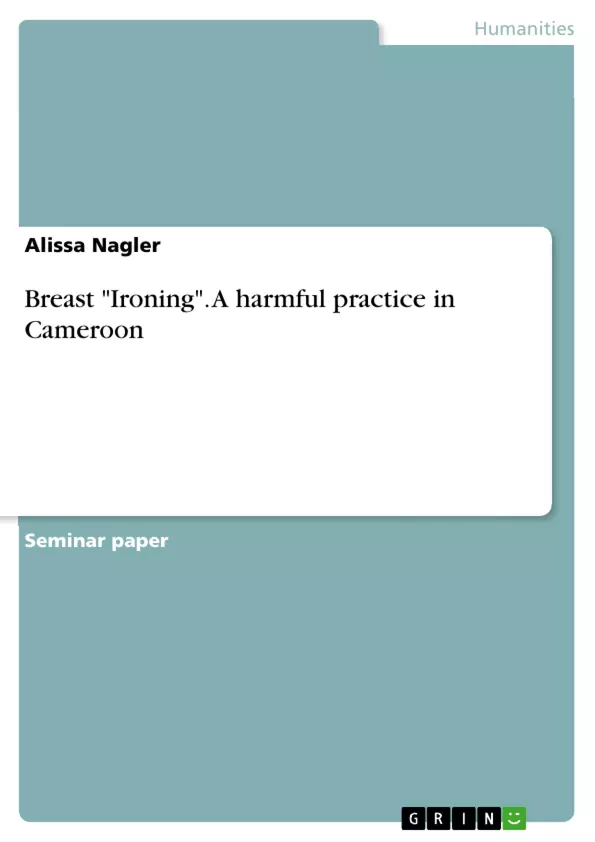In this paper, we will focus on breast “ironing” in Cameroon. After brief information about the country, we will discuss the methods and the consequences of this practice. Subsequently, we will talk about the international and national policy and legal framework to finally see what is done to stop the further practice of breast “ironing”.
Violence against women is still a serious issue all around the world. Although the perpetrators are mostly men, there are also cases where the offenders are female. This is the case in some Western and Central African countries like in Chad, Benin, Guinea-Bissau, Guina-Conakry, Togo, Côte d’Ivoire, Kenya and Zimbabwe and mostly in Cameroon (Tapscott, 2012), where women do harm to their daughters in the form of breast “ironing”. This method consists of massaging, pressing or pounding the breasts flat with different objects like hot stones. The victims are mostly between eight and 12 years old (Tapscott, 2012) when their breasts begin to grow. The reason behind this practice is to prevent the young women to look feminine as long as possible to protect them from teenage pregnancies. Latter would mean no fully completed education and a social exclusion.
Table of Contents
- Violence against Women in Cameroon
- Breast "Ironing" in Cameroon
- The Republic of Cameroon
- Methods and Consequences of Breast "Ironing"
- Prevalence of Breast "Ironing"
- Consequences of Breast "Ironing"
- International and National Policy and Legal Framework
Objectives and Key Themes
This research paper investigates the harmful practice of breast "ironing" in Cameroon, a method of flattening breasts in young girls using heated objects. It aims to explore the motivations behind this practice, its methods, its consequences, and the legal framework surrounding it. It also analyzes the prevalence of breast "ironing" in different regions of Cameroon, particularly the urban areas.
- The practice of breast "ironing" in Cameroon
- The reasons behind the practice, including the control of female sexuality and the prevention of early pregnancy
- The methods used in breast "ironing" and their consequences
- The prevalence of breast "ironing" in different regions of Cameroon
- The legal framework surrounding breast "ironing" in Cameroon
Chapter Summaries
- The first chapter provides an overview of the issue of violence against women and introduces the practice of breast "ironing" as a form of female harm. The author highlights the prevalence of this practice in several African countries, particularly in Cameroon.
- The second chapter delves into the context of Cameroon, describing its social and demographic characteristics. It highlights the challenges of high maternal mortality rates, limited access to education and careers, and the vulnerability of women to early pregnancy due to limited sex education and the unpopularity of contraceptives. This chapter connects these factors to the practice of breast "ironing."
- The third chapter explores the origins and development of breast "ironing". It discusses the historical origins of the practice as a medical measure to enhance breast milk production and its evolution into a method to control female sexuality. This chapter also outlines the different methods used in breast "ironing" and its prevalence across different regions of Cameroon.
- The fourth chapter focuses on the consequences of breast "ironing", highlighting the short-term and long-term impacts on the physical and psychological well-being of victims.
Keywords
This research paper explores the key themes of violence against women, female genital mutilation, breast "ironing", Cameroon, traditional practices, cultural norms, sexual control, prevalence, consequences, and legal frameworks. It investigates the relationship between the social and cultural context of Cameroon and the practice of breast "ironing".
- Quote paper
- Alissa Nagler (Author), 2016, Breast "Ironing". A harmful practice in Cameroon, Munich, GRIN Verlag, https://www.grin.com/document/1286662



